
Zero Waste Design Guru – Andra Eliza Nistor
There are not many moments where I got stopped in my tracks by someone. However, browsing over Facebook in one of the sustainability groups I am honored to be a part of, I came across a brilliant zero waste fashion design student. She is a specialist in zero waste pattern design. Her name is Andra Eliza Nistor and she is a MA Fashion Design Student at Nottingham Trent University, UK. I wanted to share with you her story with Zero Waste Patterns and Designs. However, before I do, I want to give you a little bit of background on what Zero Waste Patterns are and why they are important.
At Moda Circolare we believe Circular Design is part of where fashion has to move in the future in order to be sustainable. Circular Design includes many things including designing for longevity, utilizing low impact fibers and designing a garment for its end life. However, one of the other items in Circular Design is utilizing Zero Waste Patterns where possible. The Zero-Waste Pattern Design Technique is a design technique that eliminates textile waste at the design stage. Typically when a pattern is created, 15-20% of the fabric is not used and just end ups on the cutting room floor and then sadly heads to the landfill or incinerator. There is so much wasted fabric when garments are made.
The reason why zero waste patterns are so important is that there is no wasted fabric, or minimal fabric is wasted when a garment is made. It is very rare that companies utilize these waste scraps. So zero waste patterns help to optimize the use of the material to ensure zero waste!!
Designers are critical to this process as they have to study the shapes and the fabric in order to utilize all the fabric. The zero-waste technique requires that you need to know your textile dimensions to be able to design your garment and also need to know your design dimensions to source your textile. You will need to carefully plan how you use the piece of textile by arranging your pattern pieces like a jigsaw puzzle.

When I saw Andra’s beautiful designs, I asked if she would share with us her experience with Zero Waste Pattern Use and Cutting. Andra’s inspiration on Zero Waste Techniques is quite interesting. Below is her first-hand experience and designs.
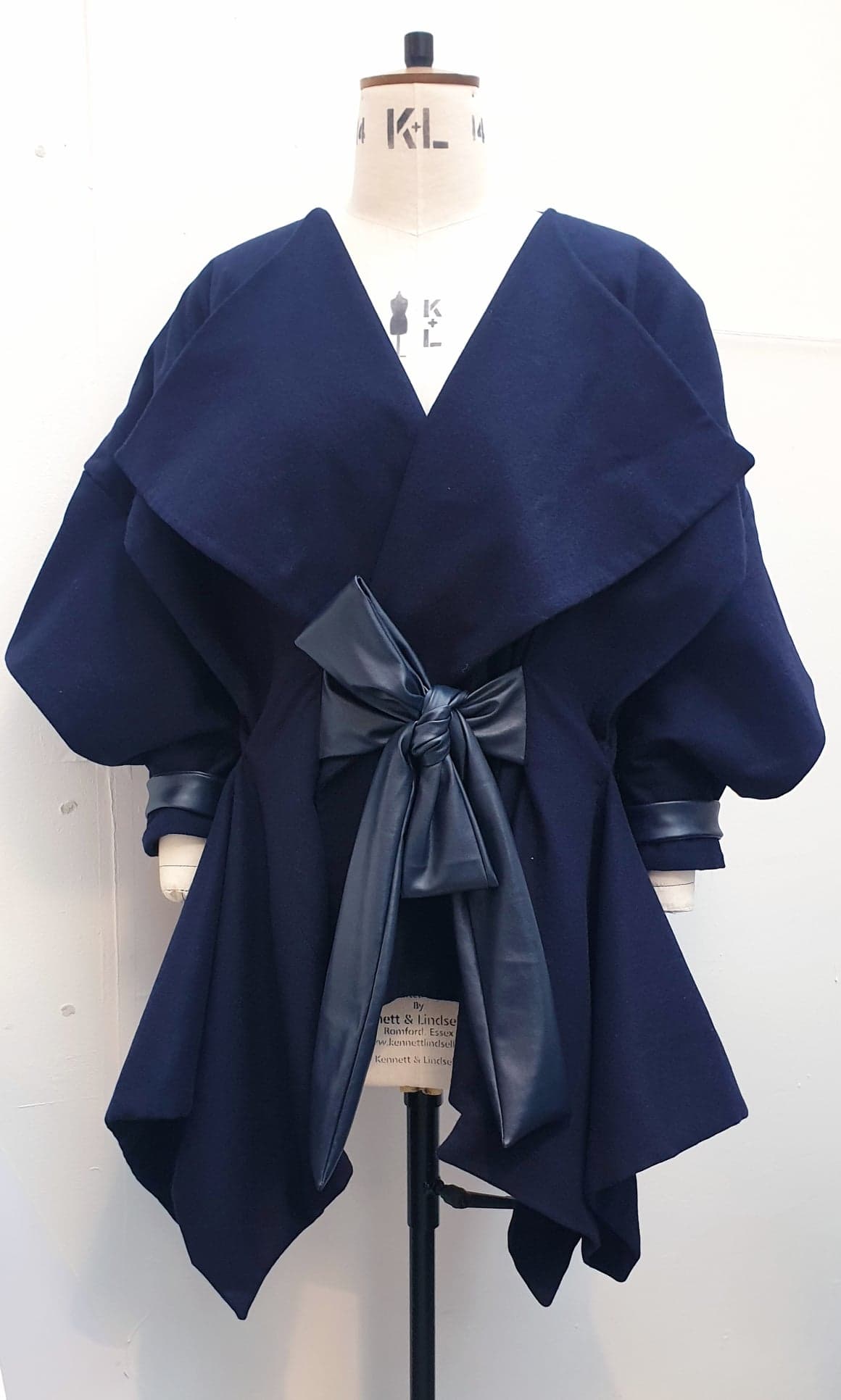
ANDRA ELIZA NISTOR’S VENTURE WITH ZERO WASTE PATTERNS
-HER STORY-

“Eco-friendly”, “green”, “sustainable”, “organic”. One look around the room and everyone is already rolling their eyes, imagining earthy, faded colors, rough textures and a hessian sack for a dress. As both designers and consumers, this is the exact point where we give up on the sustainable fashion conversation, before it’s even started, and who can really blame us?
Without in-depth research on fabrics, one can hardly believe that some of the most beautiful and luxurious fabrics out there are, in fact, sustainable and eco-friendly. Hemp can now be made into fine silks, coconut fiber is the new vegan-friendly alternative to wool (Woocoa), pineapples (Pinatex) and cactuses (Desserto) can turn into beautiful leathers, while Tencel and Cupro are taking over the market as amazing, guilt-free replacements for shirting and lining.
However, these new and exciting materials can often be harder to source, more expensive and usually come in limited quantities, which stresses the question: why waste any of it?
One innovative method of reducing waste and improving sustainability is zero waste pattern cutting. When using this technique, the design and the patternmaking merge into one process, the designer is the patternmaker, the pattern informs the final outcome. This approach enables the designer to become a real agent of change, it allows them to alter a product’s environmental impact right from the beginning.
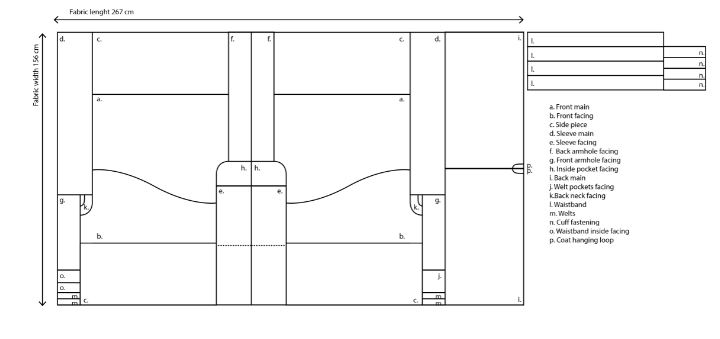
Earlier this year I had the chance to experiment with zero waste pattern cutting. The garment that I am sharing with you today is a coat. After countless hours spent experimenting with different fabrics and widths, I realized that, while zero waste pattern cutting can deliver innovative and unexpected shapes and silhouettes, some of the garments created using this method are not always suitable for everyday use. They can lack versatility and functionality, they can be hard to adapt to one’s style and can be even harder to integrate in a pre-existing wardrobe, all of which play an essential role in the way people choose to dress. After all, you cannot just take a rectangle piece of cloth, wrap it around the body, and call it a jacket.
That’s when it hit me: what’s the one area of fashion that screams “Functionality” and “Versatility”? How may times have you wondered: “How amazing would it be if womenswear were more like… menswear?” All those amazing pockets, not to mention the amount of wears they get out of a single suit, while woman have to constantly upgrade their wardrobe?
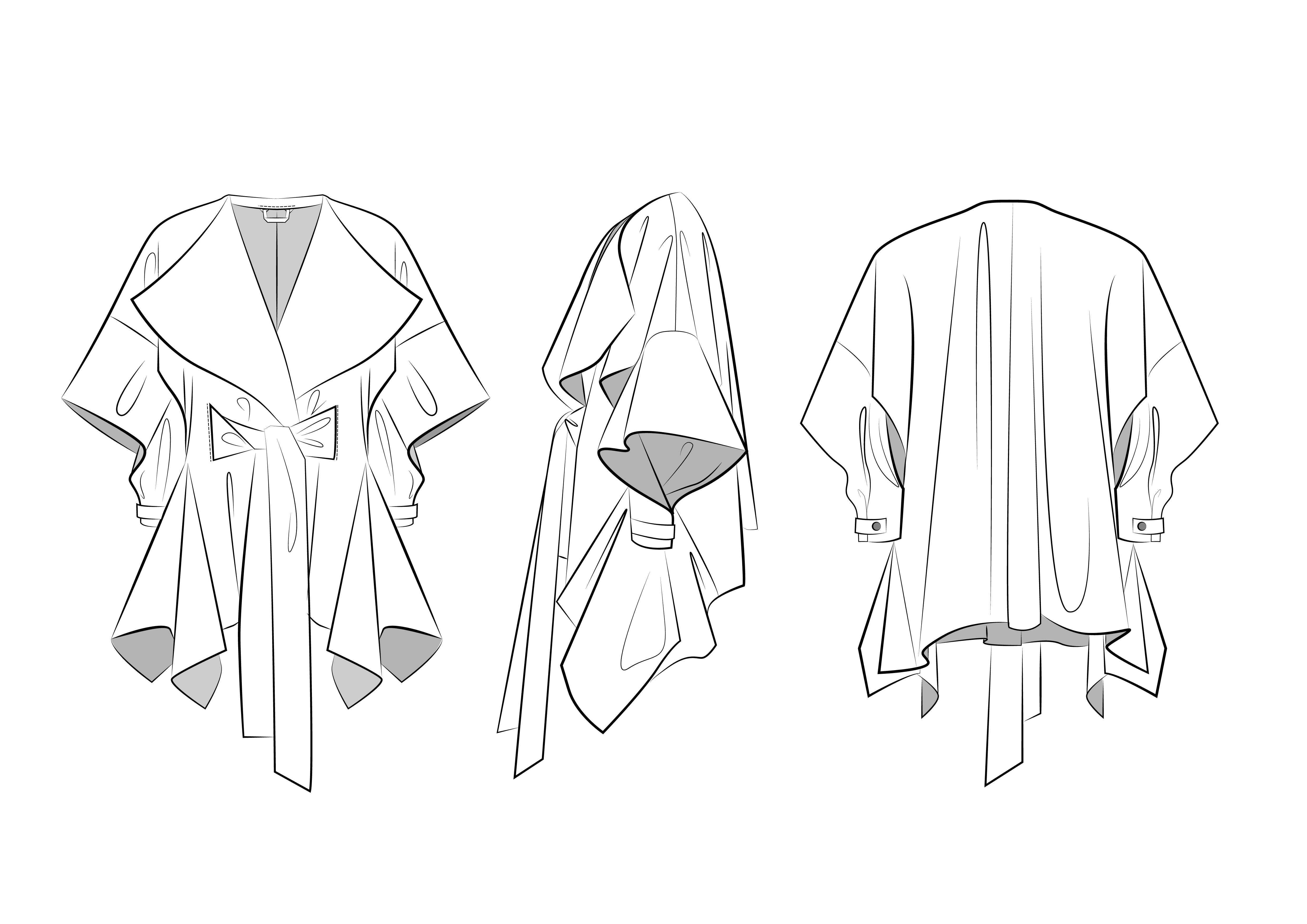
After thorough research into Saville Row tailoring, especially their beautifully hand-finished suits, the answer was clear: the devil was in the details. By taking a closer look at the final piece I had created, one can see how by adding elements such as: a revere collar, inside welt pockets, a waist tie, cuff fastenings and a full lining, a seemingly conceptual item turned into a coat, which combines creative pattern cutting and menswear tailoring, giving birth to a garment that is sustainable, aesthetically pleasing and versatile.

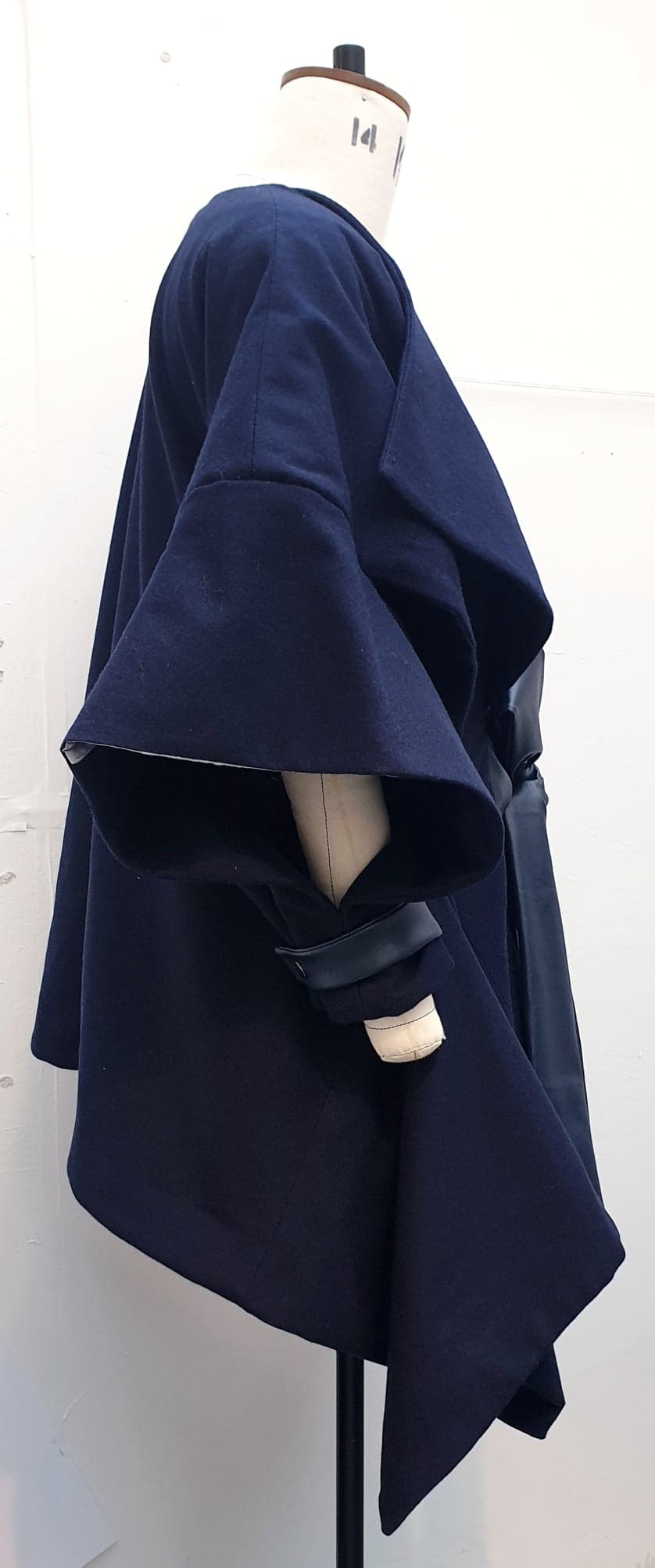
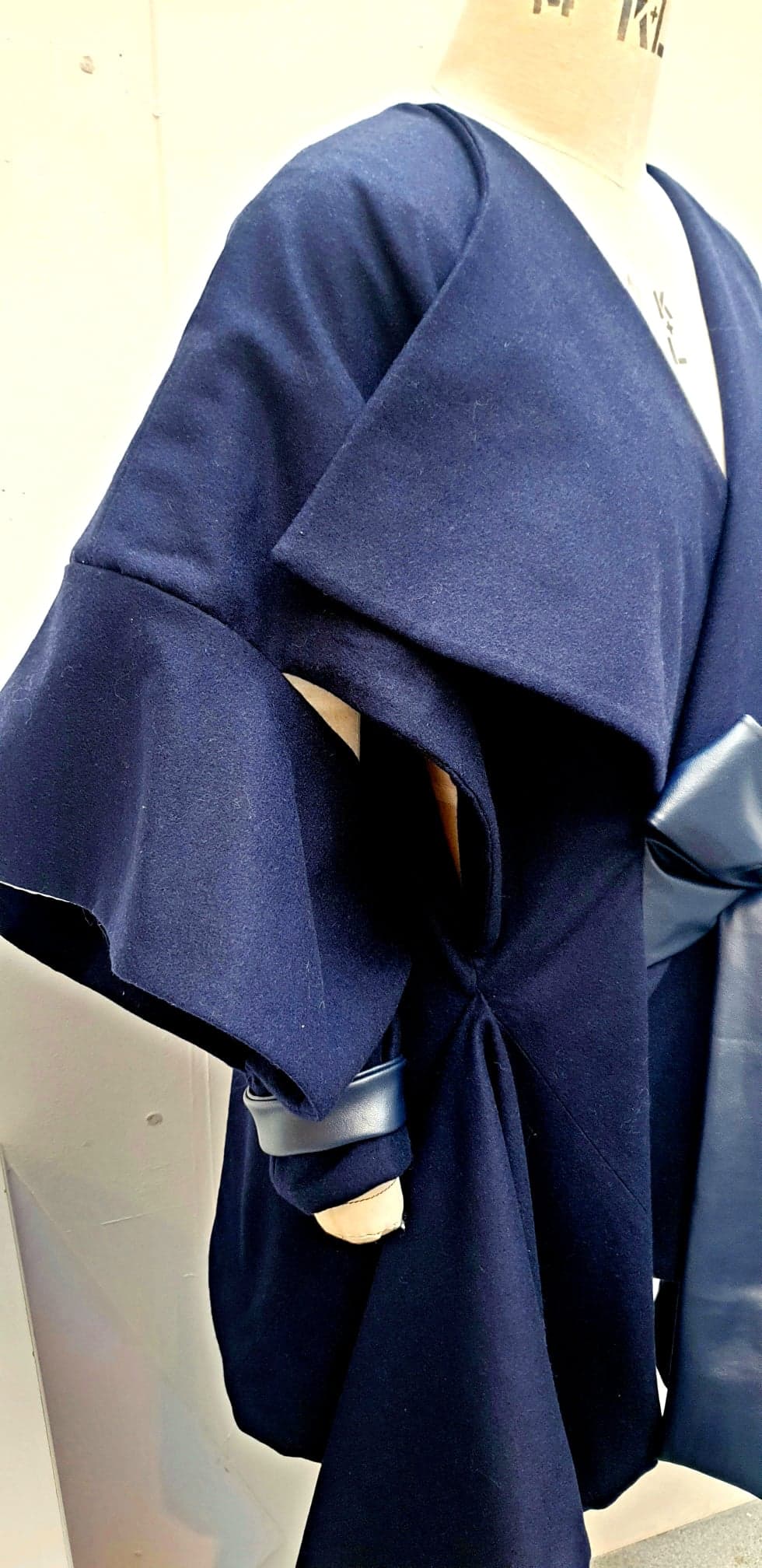
I look forward to building on this knowledge, to push the limits of zero waste pattern cutting and create a capsule collection that is beautiful, as it is sustainable, feminine, but with a hint of masculine versatility; creative, as well as durable; comfortable, yet interesting in cut, color and pattern.

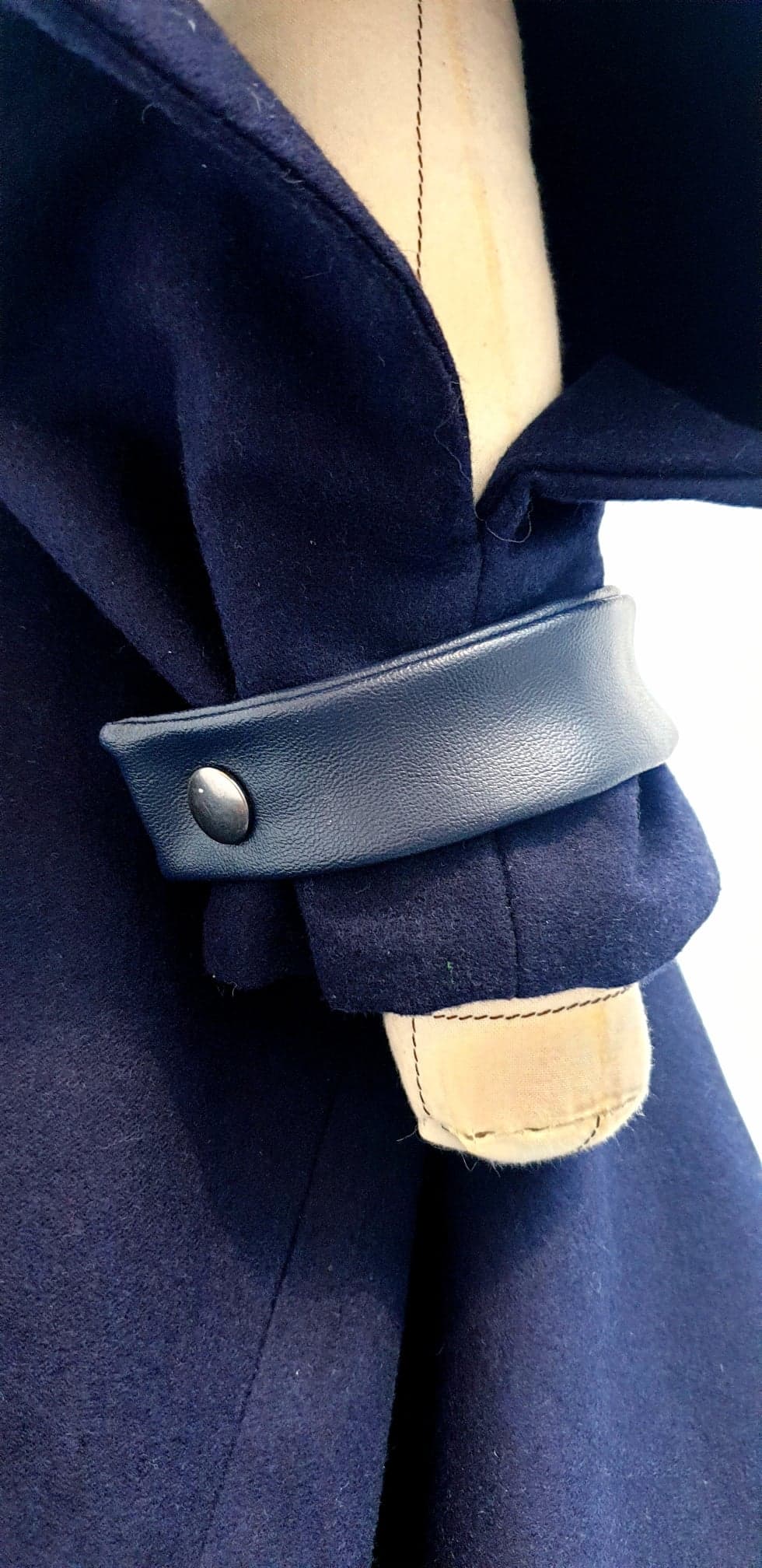
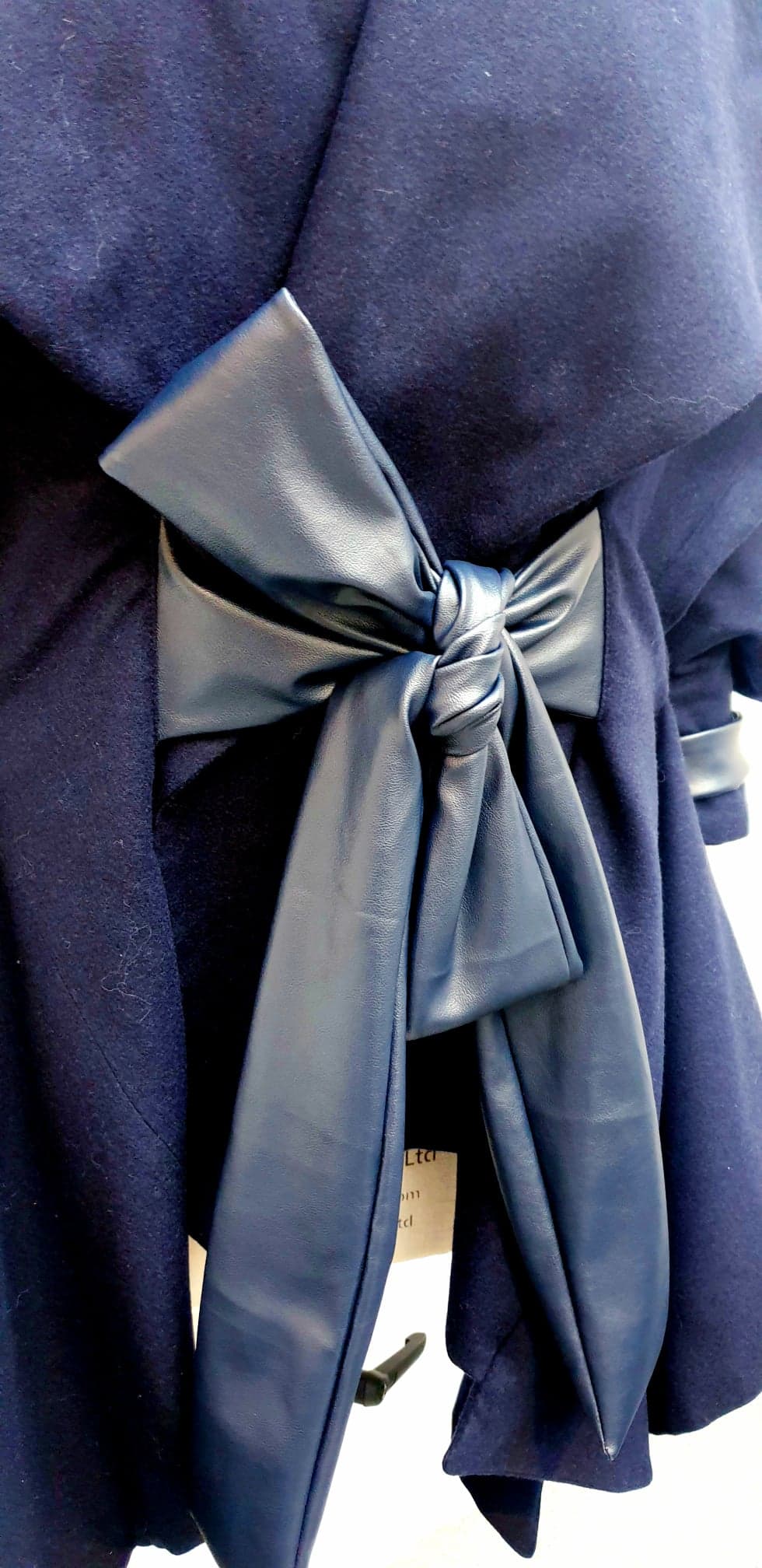
It might seem like a scary area, but zero waste can not only change the face of fashion, but it can also empower designers, giving them the opportunity to make the right decisions, starting with a product’s conception and it can help them change the system from within. The change is needed and I, therefore, challenge you, dear reader, to be brave, to experiment and to be relentless in your search for a more sustainable future. Your work will be rewarded!
I want to say a personal thank you to Andra Nistor for sharing her zero waste pattern creation with us. It is amazing to see such creative designers and to understand where their ideas stem from. If you want to reach Andra Nistor you can do so on her LinkedIn Page here.
About the author:

Lizzy Cross is an expert in sustainable and circular fashion and is the founder of Moda Circolare, a sustainable fashion consulting agency. Moda Circolare helps fashion and apparel brands embed sustainability into their current business strategies. Moda Circolare’s mandate is to help the fashion industry live in harmony with nature and they do this by working with brands to create robust Sustainable and Circular Business Strategies and Roadmaps for Success.
If you are interested in learning more please contact us below.
Error: Contact form not found.
